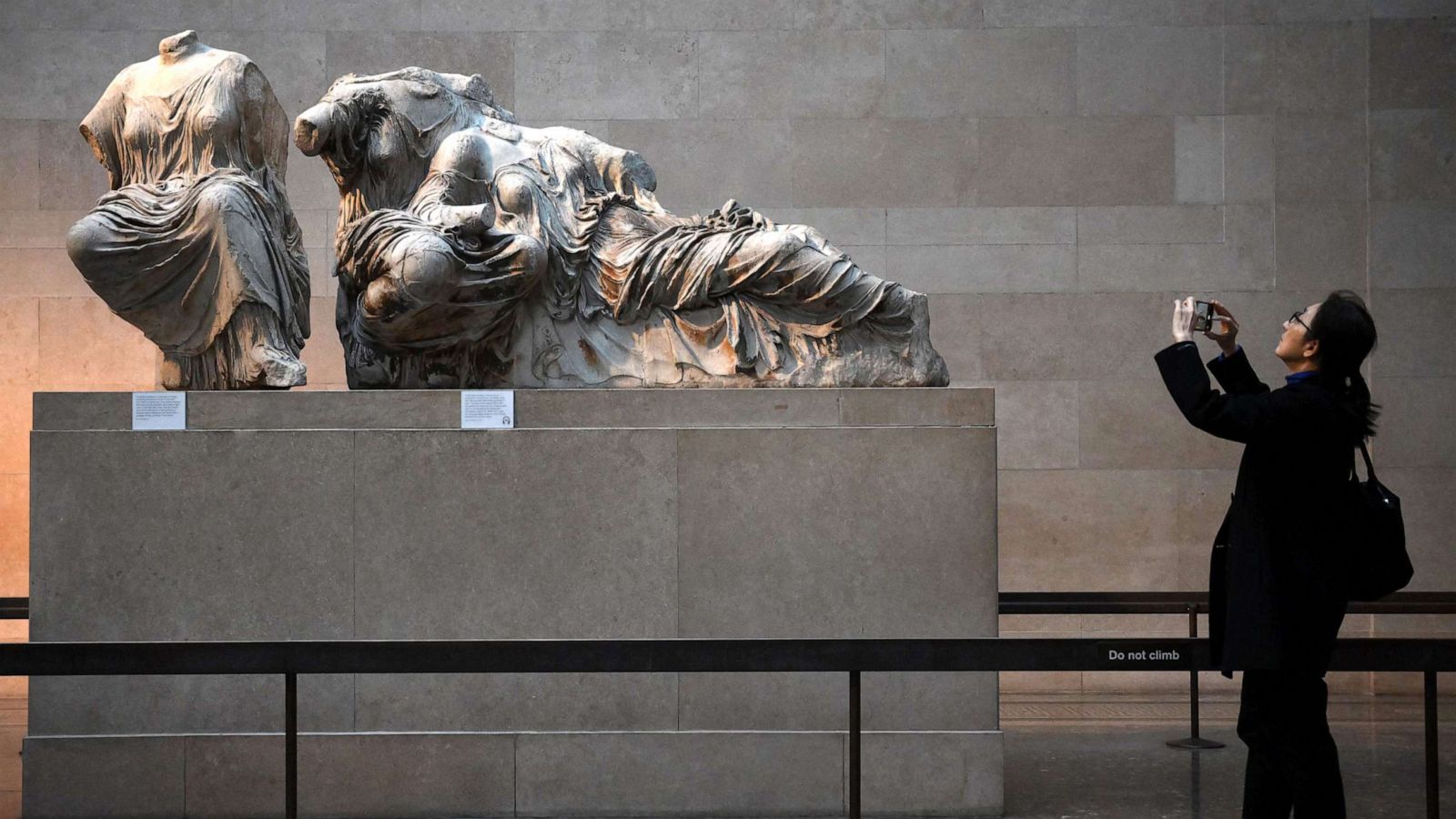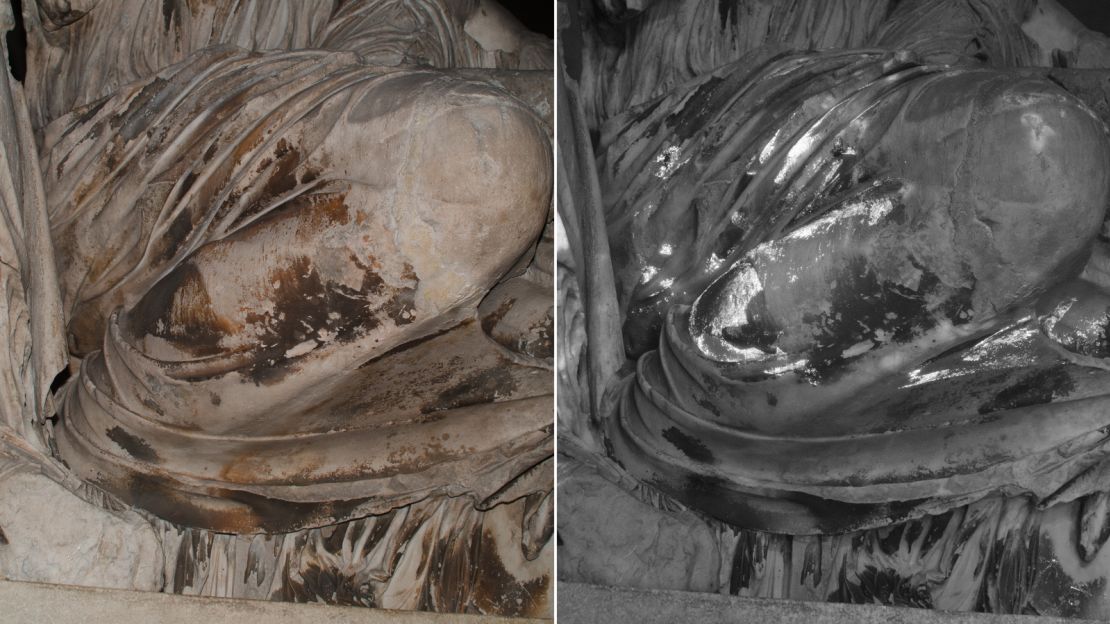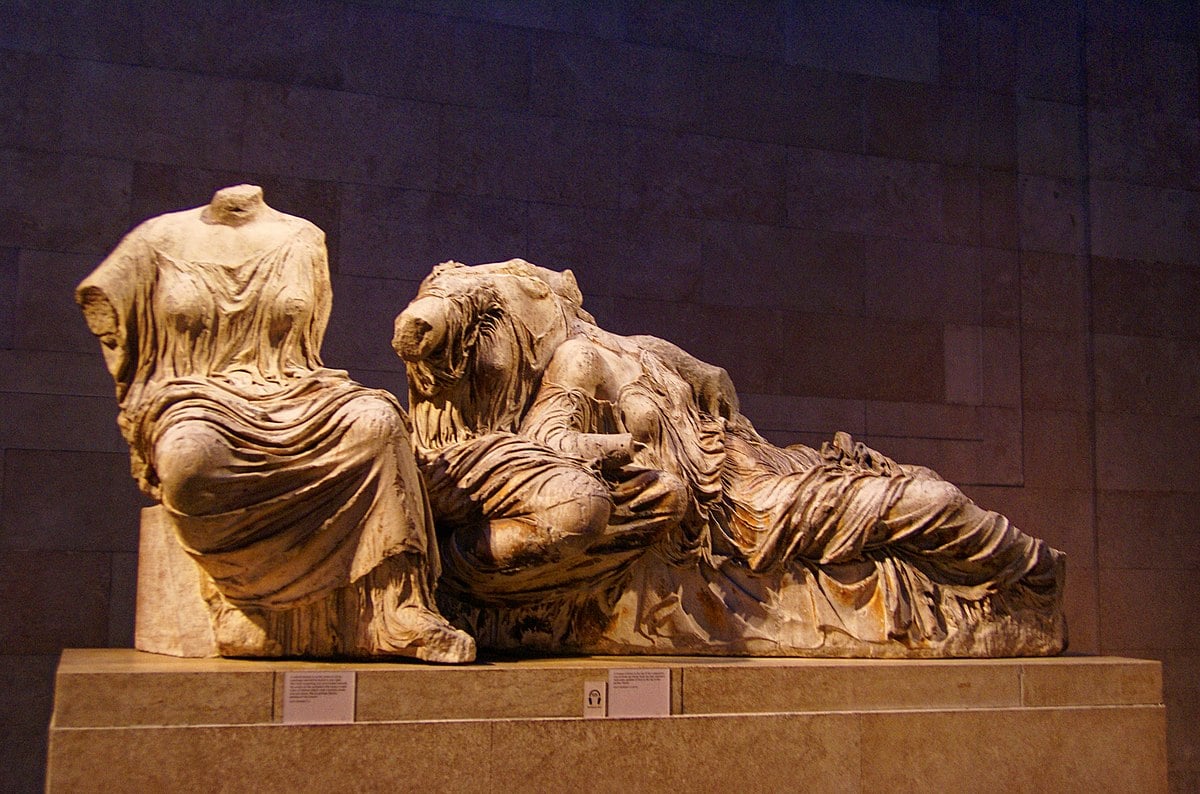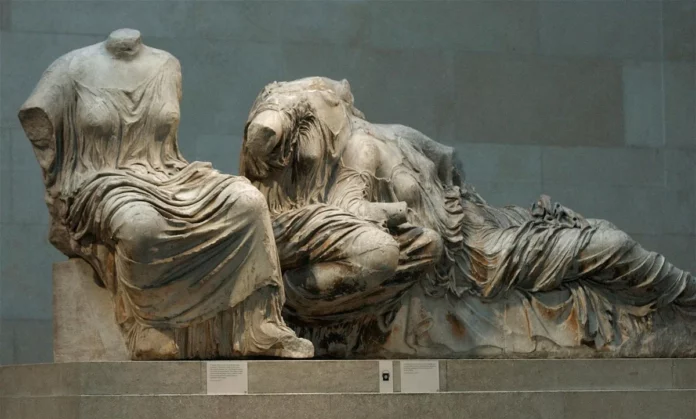Classical Greek marble sculptures have long been associated with a crisp, white appearance, but a new study has revealed a more vibrant and colorful past. Researchers at the British Museum and King’s College London have discovered traces of paint on 11 out of 17 figures and a section of the Parthenon’s frieze, shedding light on the intricate artistry of these ancient masterpieces.
Revealing the “Egyptian Blue” Pigment

Using a non-invasive imaging technique called visible-induced luminescence imaging, the researchers were able to detect microscopic traces of paint, including the distinctive “Egyptian blue” pigment. This bright blue color, made from a blend of calcium, copper, and silicon, was highly prized in ancient times and often reserved for royalty or depictions of gods and goddesses.
The study found evidence of the “Egyptian blue” pigment in various locations, such as the serpent tail on the sculpture of mythical king Kekrops, the background space of statues Demeter and Persephone, and the garment worn by Dione, the mother of Aphrodite, where the formation of two flower petals was discovered.
Uncovering a Unique “Parthenon Purple”

In addition to the “Egyptian blue” pigment, the researchers also detected a unique purple color that they named “Parthenon purple.” This hue, unlike the more common shellfish-based purple found in the ancient Mediterranean, has not been fully identified in terms of its ingredients. Classical texts refer to an elusive purple color, but the specific recipe was closely guarded due to its immense value.
Challenging the Perception of Classical Art
These findings challenge the traditional Western perception of classical art as pure, plain white marble. Instead, they reveal the importance of color and intricate decoration in ancient Greek artistry. As Michael Cosmopoulos, a professor of archaeology and Greek studies at the University of Missouri–St. Louis, stated, “This recent study gives more proof that colorful decoration was common in ancient Greek art.”

Towards a Deeper Understanding
While a full reconstruction of the original appearance of the Parthenon sculptures is not yet feasible, this study represents a significant step forward in understanding the creative process and the meaning behind these iconic works of art. The researchers emphasize that the application of color was carefully considered, with both carving and color being integral parts of the sculptural objective.
As further imaging techniques are developed, the potential to uncover additional colors and patterns on the Parthenon sculptures promises to deepen our understanding of this remarkable cultural legacy. The rediscovery of the vibrant hues and intricate designs that once adorned these masterpieces offers a glimpse into the artistic vision of ancient Greek sculptors, inspiring a renewed appreciation for the true splendor of the Parthenon.
